1.3 - A practice of analysis in the tonal harmonic discourse from Bach to Wagner ||
A) FORMULAS - 1. Definition of
a formula ::
2. Presentation of
the little catalogue of harmonic vocabulary ::
3. User's guide to
the little catalogue and various instructions ::
4. Examples
illustrating the little catalogue (motifs: 1, 2, 3, 4, 5, 6a, 6b, 7, 8, 9, 10, 11, 12, 13, 14, 15, 16, 17, 18, 19, 20, motifs in combination)
B) SEQUENCES - 1. Definition of a
harmonic sequence :: 2. Classifying
sequences :: 3. Melodic
formulations: characteristic motifs :: 4. The tonal
nature of the harmonic sequence :: 5.The tripartite
structure of the harmonic sequence :: 6. A
modulating sequence or not? :: 7. Diversification
of harmonic content :: 8. The harmonic
sequence as a place of subversion :: 9. Conclusion
4. EXAMPLES ILLUSTRATING THE LITTLE CATALOGUE
Motif no 2
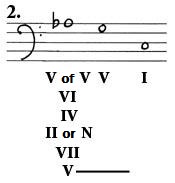
|
It is interesting to note that it is motif no 2 that supports the greatest number of different harmonic formulas.

Example 82 : F. Schubert : Symphony no 5, D. 485, III, Allegro molto (mm 63-69)

Example 83 : R. Schumann : Dichterliebe, op. 48, no 12 (mm 1-3)
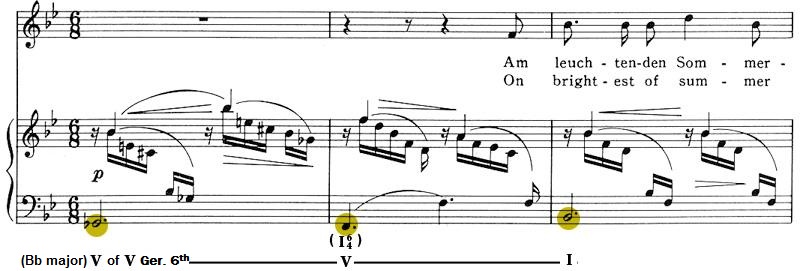
Example 84 : A. Vivaldi : Concerto in D minor

Example 85 : L.V. Beethoven : Symphony no 5, op. 67, I (mm 18-21)

Example 86 : L.V. Beethoven : String quartet, op. 18, no 4, IV, Allegro (mm 6-12)
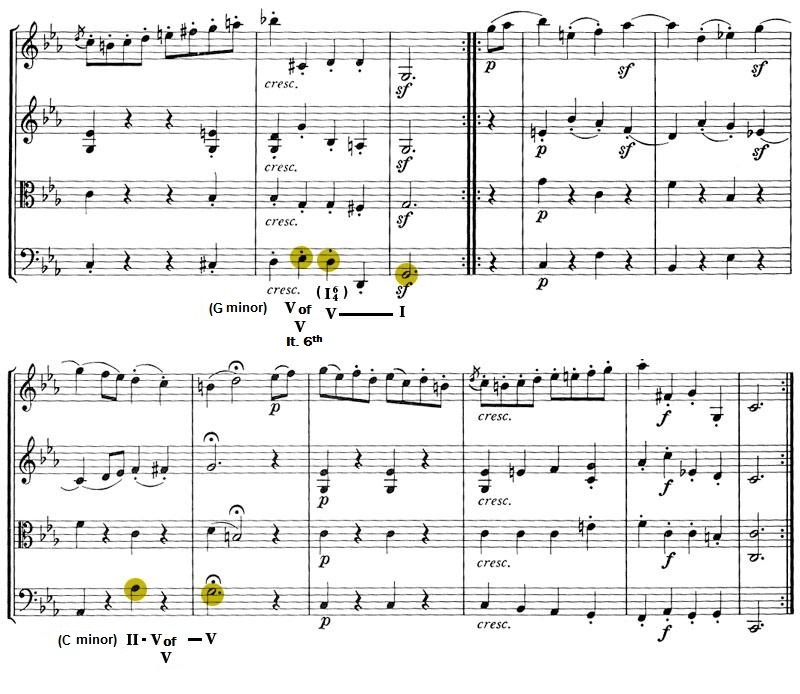
Example 87 : F. Chopin : Mazurka, op. 30, no 2 (mm 18-24)
In this example, motif no 2 appears within the context of several tonicizations:


Example 88 : R. Schumann : Albumblätter, op. 124, no 4 (end)

Example 89 : F. Mendelssohn : Sonata for cello and piano, op. 45, II, Andante (mm 1-4)

Example 90 : L.V. Beethoven : Symphony no 4, op. 60, I, Allegro vivace (mm 173-177)

Example 91 : F. Liszt : Harmonies poétiques et religieuses no 3, end (mm 356-362)
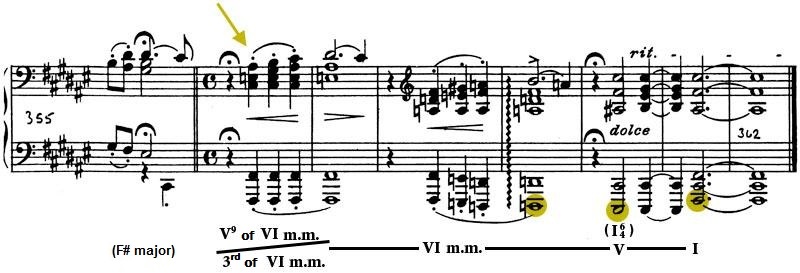

Example 92 : F. Schubert : Der Wanderer, op. 4, no 1, Sehr Langsam (mm 25-26)

Example 93 : N. Rimsky-Korsakov : Scheherazade, op. 35, III, Grazioso (mm 74-76)

Example 94 : W.A. Mozart : Sonata for violin and piano, K. 379, Allegro (mm 9-12)

Example 95 : R. Schumann : Symphonic Etudes, op. 13, no 9, Presto possibile (mm 37-40)


Example 96 : G. Verdi : La Traviata, Act I, (end)
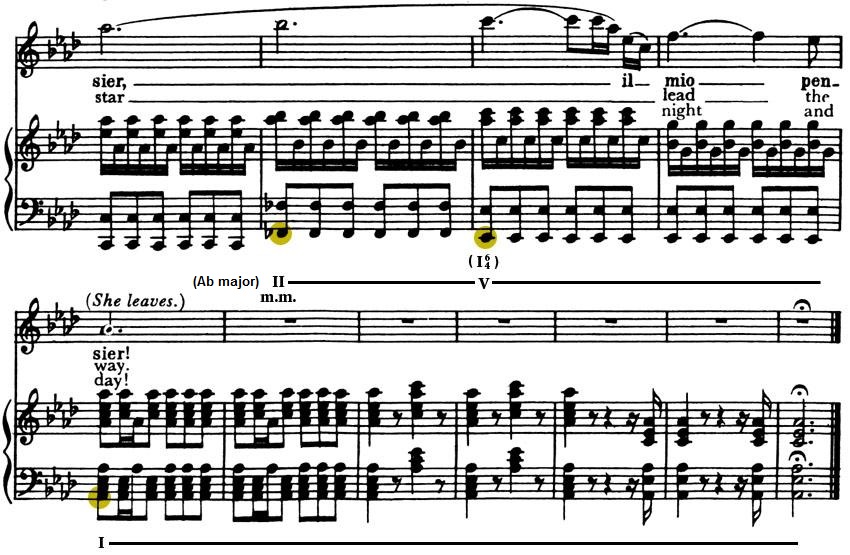
Example 97 : J.S. Bach : The Well-Tempered Clavier, vol. I, Prelude no 22, BWV 867 (mm 10-11)

Example 98 : W.A. Mozart : Sonata for violin and piano, K. 379, II, var. 4, Allegro (mm 1-5)

Example 99 : F. Schubert : Winterreise, D. 911, no 7, Auf dem Flusse, (mm 68-74)
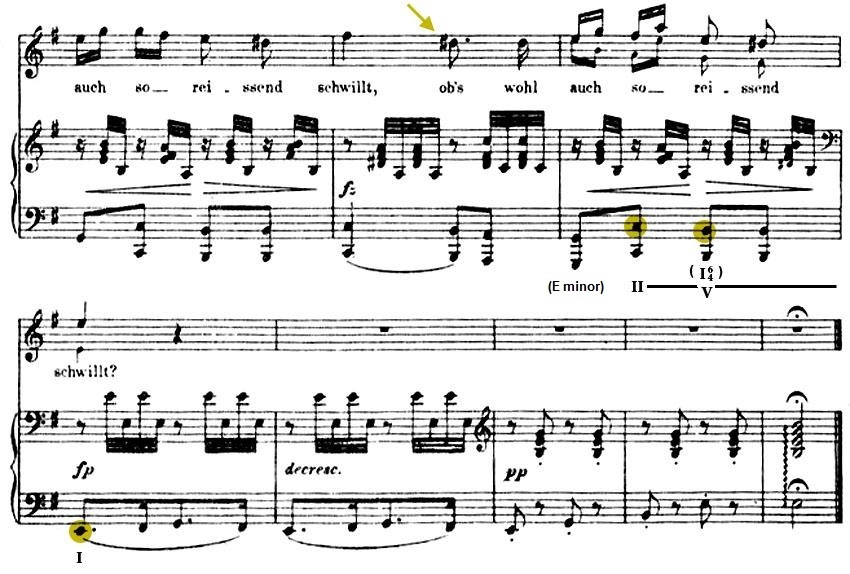

Example 100 : F. Schubert : Fantasy, op. 103, Allegro molto moderato (mm 561-563)
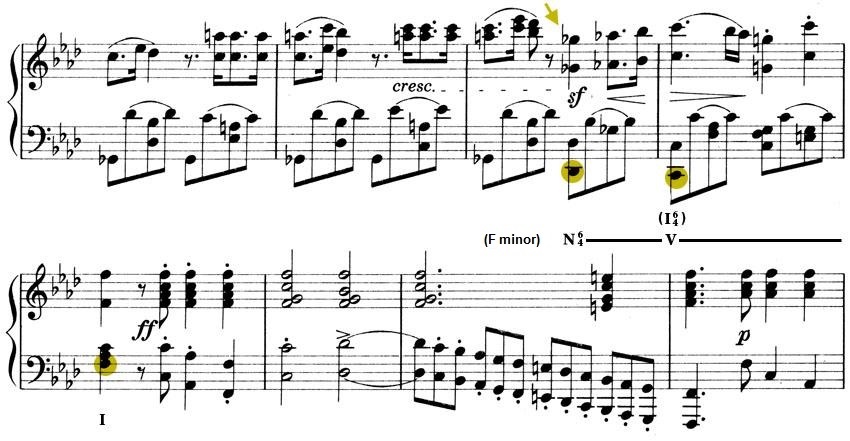

Example 101 : W.A. Mozart : String Quartet, K. 428, I, Allegro non troppo (mm 85-90)
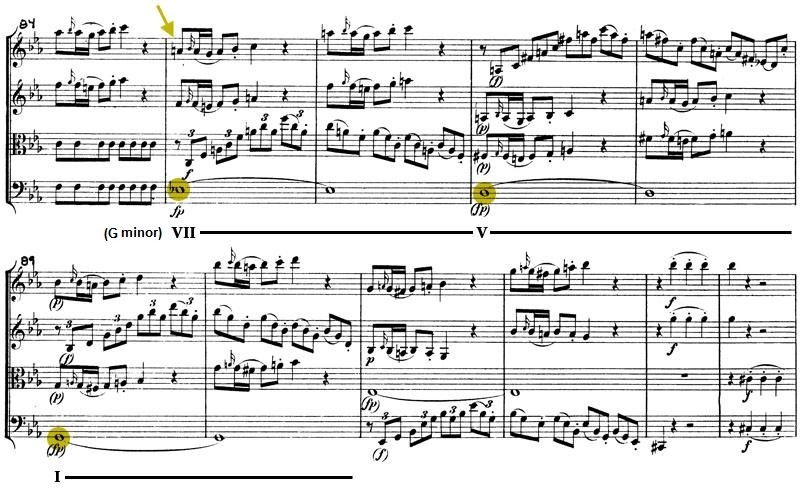
Example 102 : J. Brahms : Symphony no 1, op. 68, IV, Piu Allegro (mm 13-19)

Example 103 : G.F. Handel : Messiah, no 29 (mm 1-5)
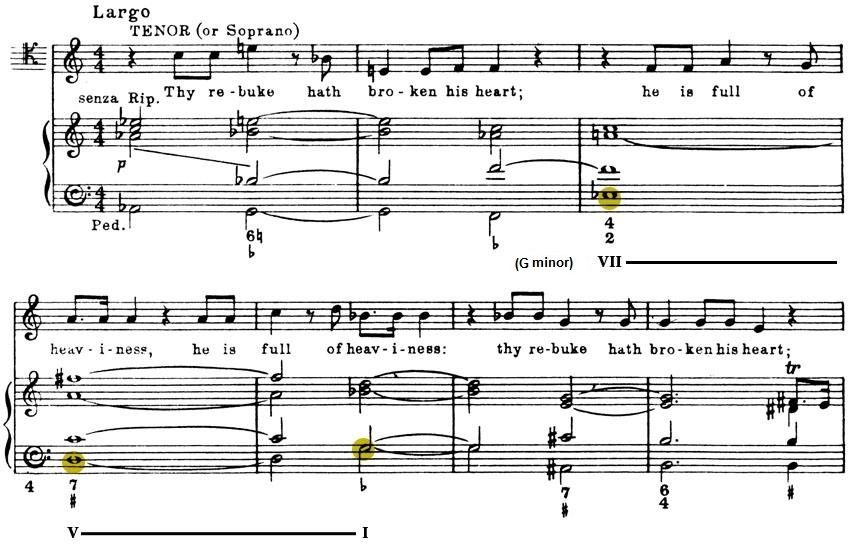

This pair will be explained in detail in the section dedicated to harmonic sequences.
Example 104 : J. Brahms : Symphony no 3, op. 90, I (mm 21-23)

Example 105 : R. Wagner : Rienzi, Overture (end)

The next
two examples illustrate the appearance of several
functions (N and V of V) built on the first note
of motif no 2:
Example 106 : W.A. Mozart : Don Giovanni, K. 527, Overture (mm 23-30)

Example 107 : F. Chopin : Piano sonata no 3, op. 58, Largo (mm 109-113)
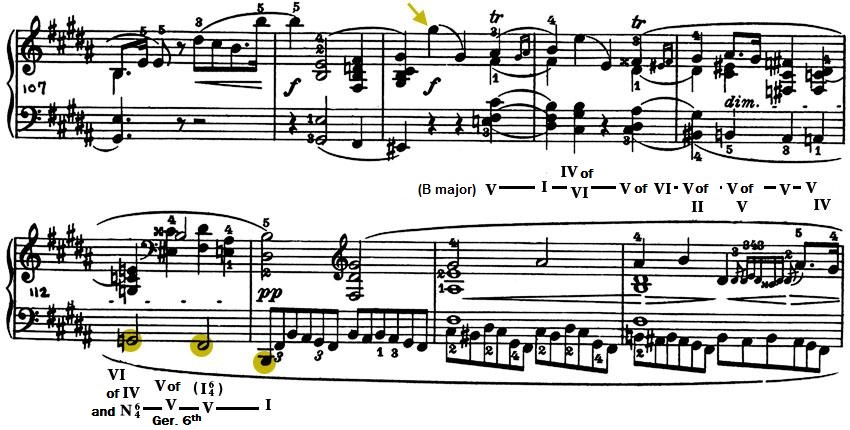
motif no 3 
|
